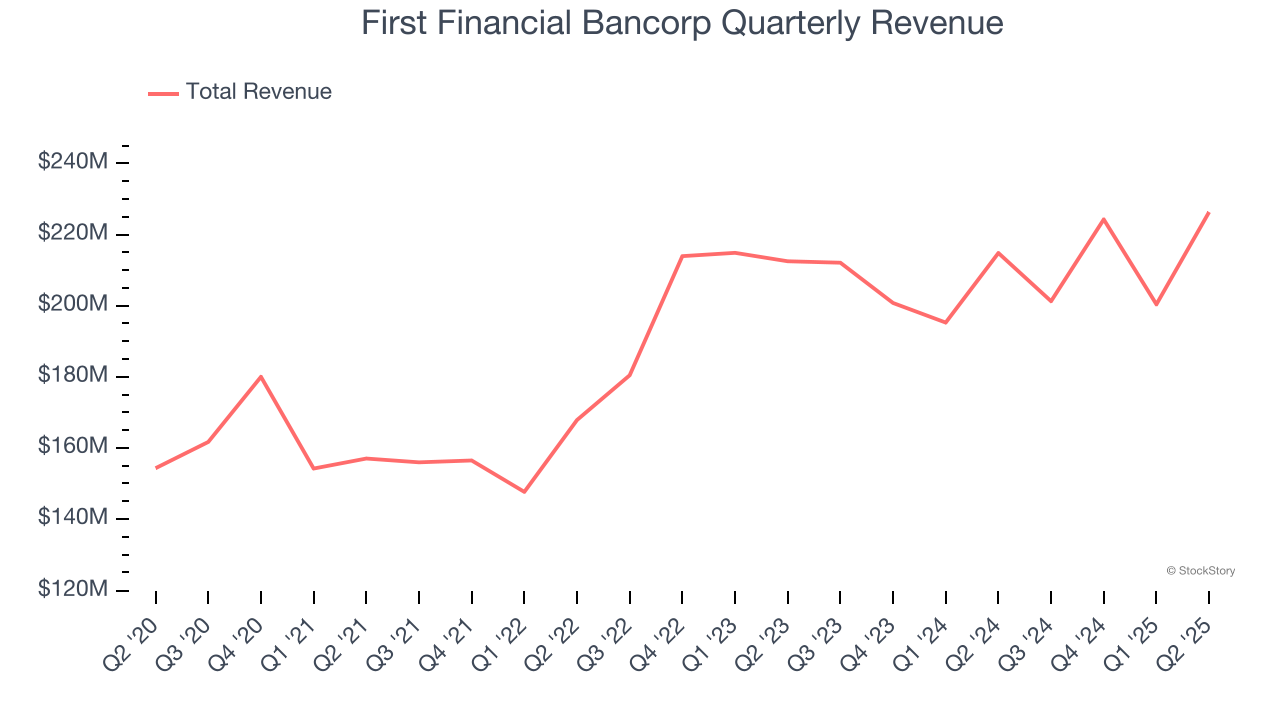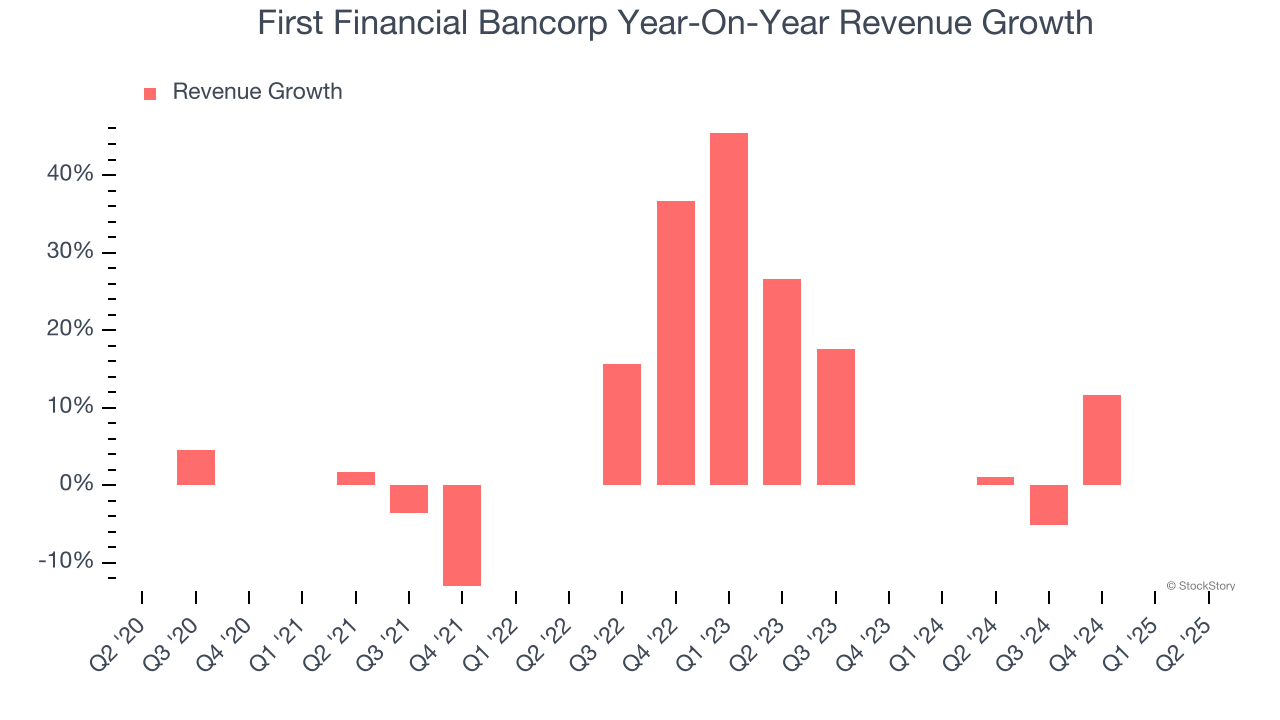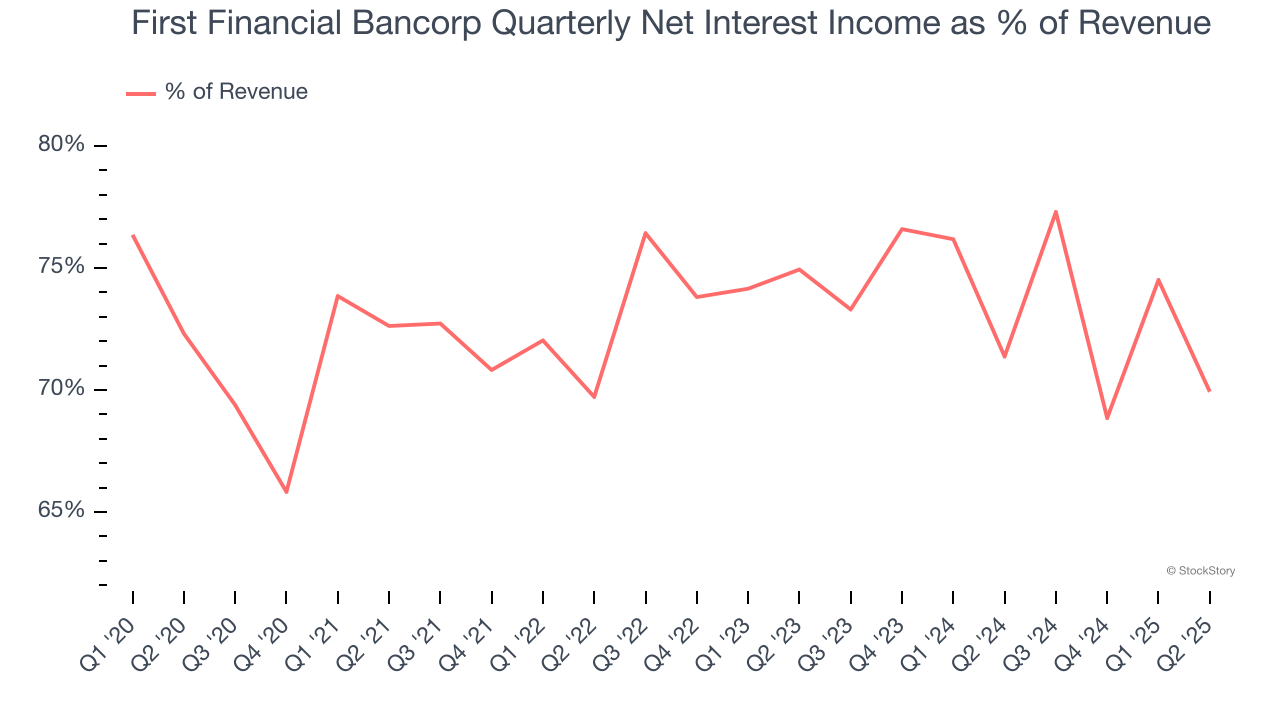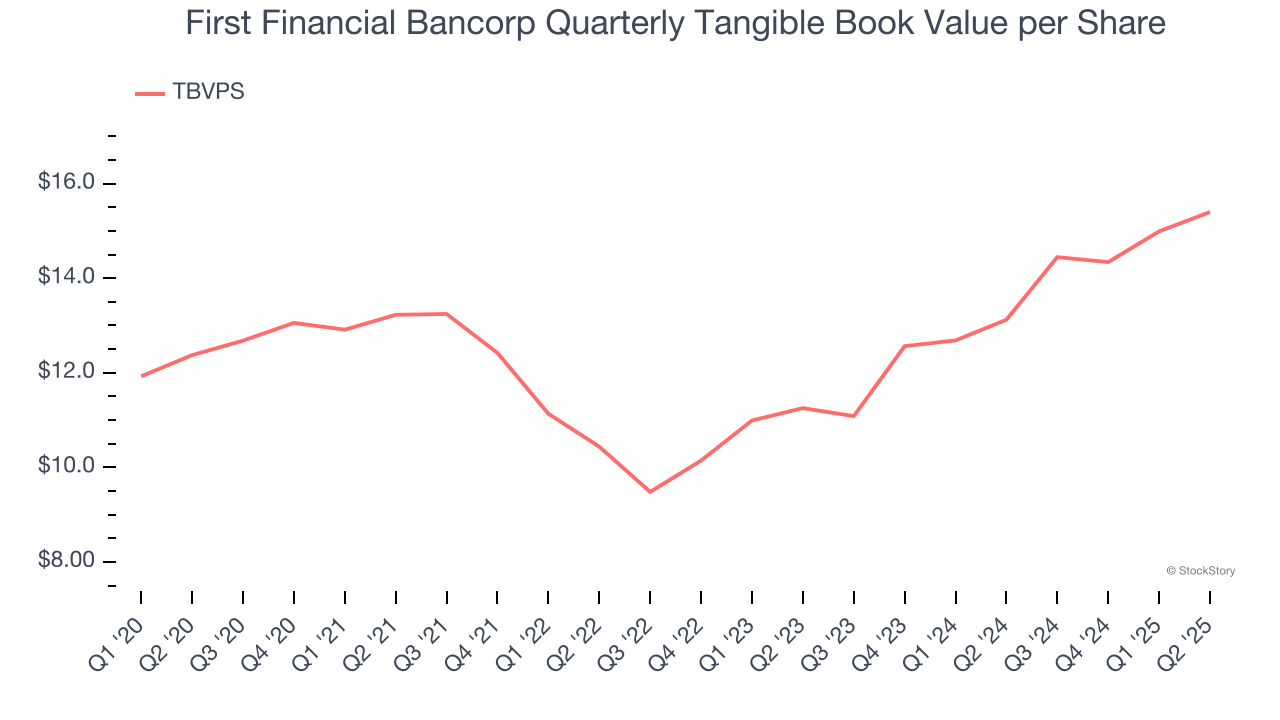
Regional banking company First Financial Bancorp (NASDAQ: FFBC) beat Wall Street’s revenue expectations in Q2 CY2025, with sales up 5.4% year on year to $226.3 million. Its non-GAAP profit of $0.74 per share was 8.8% above analysts’ consensus estimates.
Is now the time to buy First Financial Bancorp? Find out by accessing our full research report, it’s free.
First Financial Bancorp (FFBC) Q2 CY2025 Highlights:
- Net Interest Income: $158.3 million vs analyst estimates of $155.4 million (3.2% year-on-year growth, 1.8% beat)
- Net Interest Margin: 4.1% vs analyst estimates of 4% (5 basis point year-on-year decrease, 10 bps beat)
- Revenue: $226.3 million vs analyst estimates of $219.4 million (5.4% year-on-year growth, 3.1% beat)
- Efficiency Ratio: 56.9% vs analyst estimates of 58% (1.1 percentage point beat)
- Adjusted EPS: $0.74 vs analyst estimates of $0.68 (8.8% beat)
- Market Capitalization: $2.33 billion
Archie Brown, President and CEO, commented on the quarter, "I am thrilled with our performance this quarter. We achieved record revenue of $226.3 million, which represents a 5% increase over the same quarter one year ago. This drove adjusted(1) earnings per share of $0.74, an adjusted(1) return on assets of 1.54% and an adjusted(1) return on tangible common equity of 20%. The Company's industry-leading profitability was once again driven by a robust net interest margin. Loan growth was 2% on an annualized basis, and we were pleased with broad-based growth in most portfolios, with the exception of commercial real estate, which declined due to accelerated payoffs. Payoffs have started to subside, and we expect higher loan growth in the second half of this year."
Company Overview
Tracing its roots back to 1863 during the Civil War era, First Financial Bancorp (NASDAQ: FFBC) is a bank holding company that provides commercial banking, lending, deposit services, and wealth management to individuals and businesses.
Sales Growth
Two primary revenue streams drive bank earnings. While net interest income, which is earned by charging higher rates on loans than paid on deposits, forms the foundation, fee-based services across banking, credit, wealth management, and trading operations provide additional income.
Over the last five years, First Financial Bancorp grew its revenue at a decent 6.8% compounded annual growth rate. Its growth was slightly above the average bank company and shows its offerings resonate with customers.

Long-term growth is the most important, but within financials, a half-decade historical view may miss recent interest rate changes and market returns. First Financial Bancorp’s recent performance shows its demand has slowed as its annualized revenue growth of 1.8% over the last two years was below its five-year trend.  Note: Quarters not shown were determined to be outliers, impacted by outsized investment gains/losses that are not indicative of the recurring fundamentals of the business.
Note: Quarters not shown were determined to be outliers, impacted by outsized investment gains/losses that are not indicative of the recurring fundamentals of the business.
This quarter, First Financial Bancorp reported year-on-year revenue growth of 5.4%, and its $226.3 million of revenue exceeded Wall Street’s estimates by 3.1%.
Net interest income made up 72.7% of the company’s total revenue during the last five years, meaning lending operations are First Financial Bancorp’s largest source of revenue.

Markets consistently prioritize net interest income growth over fee-based revenue, recognizing its superior quality and recurring nature compared to the more unpredictable non-interest income streams.
Today’s young investors won’t have read the timeless lessons in Gorilla Game: Picking Winners In High Technology because it was written more than 20 years ago when Microsoft and Apple were first establishing their supremacy. But if we apply the same principles, then enterprise software stocks leveraging their own generative AI capabilities may well be the Gorillas of the future. So, in that spirit, we are excited to present our Special Free Report on a profitable, fast-growing enterprise software stock that is already riding the automation wave and looking to catch the generative AI next.
Tangible Book Value Per Share (TBVPS)
The balance sheet drives banking profitability since earnings flow from the spread between borrowing and lending rates. As such, valuations for these companies concentrate on capital strength and sustainable equity accumulation potential.
This explains why tangible book value per share (TBVPS) stands as the premier banking metric. TBVPS strips away questionable intangible assets, revealing concrete per-share net worth that investors can trust. Traditional metrics like EPS are helpful but face distortion from M&A activity and loan loss accounting rules.
First Financial Bancorp’s TBVPS grew at a mediocre 4.5% annual clip over the last five years. However, TBVPS growth has accelerated recently, growing by 17% annually over the last two years from $11.25 to $15.40 per share.

Over the next 12 months, Consensus estimates call for First Financial Bancorp’s TBVPS to grow by 6.1% to $16.35, mediocre growth rate.
Key Takeaways from First Financial Bancorp’s Q2 Results
We enjoyed seeing First Financial Bancorp beat analysts’ revenue expectations this quarter. We were also happy its net interest income outperformed Wall Street’s estimates. Overall, we think this was a decent quarter with some key metrics above expectations. The stock traded up 1.1% to $24.10 immediately after reporting.
First Financial Bancorp had an encouraging quarter, but one earnings result doesn’t necessarily make the stock a buy. Let’s see if this is a good investment. When making that decision, it’s important to consider its valuation, business qualities, as well as what has happened in the latest quarter. We cover that in our actionable full research report which you can read here, it’s free.




